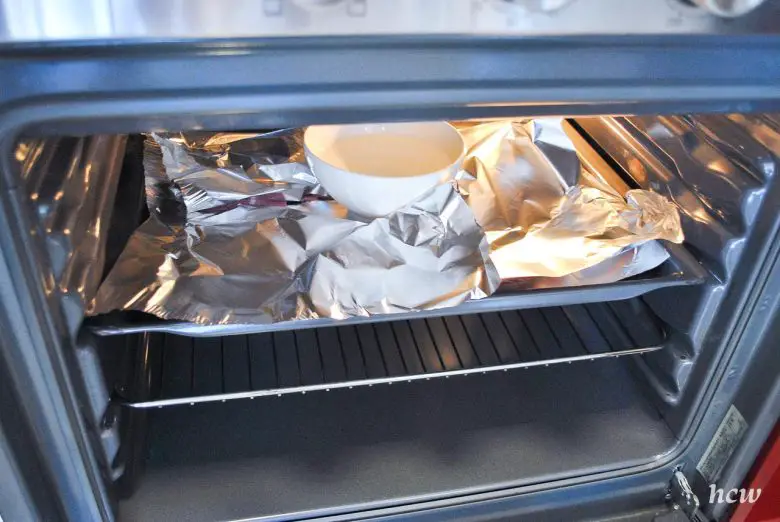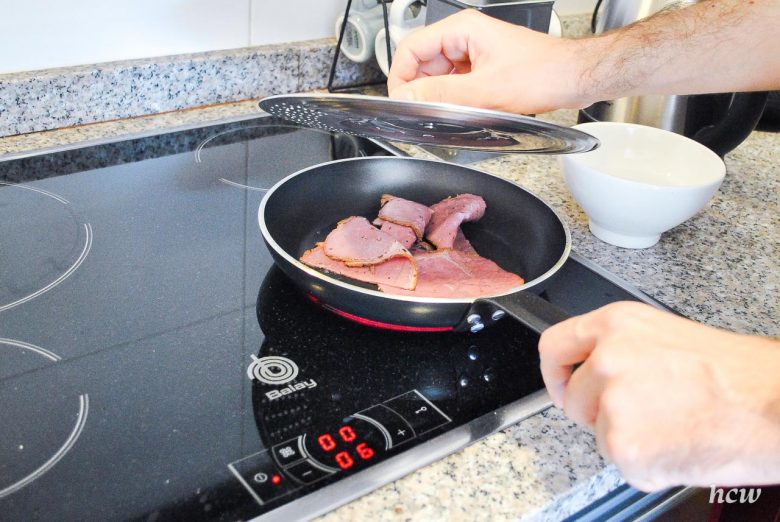You can’t go wrong with a pastrami sandwich. But how do you salvage it when it’s already cold by the time you’re home?
The best way to enjoy a pastrami sandwich is to eat it right there on the spot at your favorite deli. And it’s not just because you can snag an Instagram story and make your friends hungry.
A pastrami sandwich is at its best the moment you get it handed to you at the counter. From then on, you shouldn’t really take too much time eating it because its quality degrades in more ways than one with storage: The bread stales. The condiments dry out. The pastrami slices are no longer as tender and juicy.
And it’s not just me—your friendly food writer next door—saying this. It’s the people who get up early every day to flick the lights on America’s most iconic delis.
To find out what the pros had to say on the subject of heating up pastrami, I exchanged emails with Brad Rubin of Eleven City Diner in Chicago, IL, and Norm Langer of Langer’s Delicatessen-Restaurant in Los Angeles, CA.
Here’s what Rubin and Langer told me.
“Reheating pastrami sandwich?”, asked Eleven City’s Brad Rubin.
“In our house, it’s almost like putting ketchup on a Chicago hotdog. I can only speak about our pastrami and the way we handle, cut, and plate it. Our pastrami sandwiches are intended to be eaten right after being sliced off the navel. So how do we recommend reheating our pastrami at home? We don’t. Come on in and get it, or get it delivered from us to your table.”
And for good reason. As it turns out, Eleven City’s pastrami is sliced with those old-school slicers that produce slices about as thin as they get.
“We are proud to be using an old-school Berkel 900 series automatic slicer and slice our navel quite thin,” Rubin explained to me, “albeit we are in awe of the thick hand cut you find at a place like Langer’s in LA—truly an amazing icon.”
(So I took Rubin’s cue and also wrote to Langer’s. What I got back from them helped me shape my pastrami sandwich reheatnig strategy. Read on, and we’ll get to that in a moment.)
Rubin added that, at Eleven City Diner, they’re using the navel cut “that has quite a beautiful deckle. And given the marbling, when we slice it so thin, it becomes quite difficult to bring it back to temperature without overcooking the pastrami and making it tough and chewy.”
Finally, he noted: “Pastrami can be warmed up perfectly… just not our thin, marveled navel.”
What Rubin said gave me a crucial clue about reheating pastrami (and pastrami sandwiches)—the thinner the pastrami is cut, the harder it is to reheat it without doing damage. So do take this into consideration when doing it at home. The thinner the slices, the greater care you need to take.
If your only option is to buy the pastrami sandwich now and eat it later or have it delivered to you cold, Jim Langer replied to me with the reheat instructions that go out with the LA deli’s nationwide food shipments on Goldbelly. Here they are:

I took note of Langer’s instructions, did a little reading here and there on the Internet, then rolled up the sleeves of my shirt and made a pastrami sandwich. I then put the sandwich in the fridge overnight and took the tips the pros gave me, as well as the ones I found online, to come up with the pastrami sandwich-reheating guide below.
How to Reheat a Pastrami Sandwich
Avoid reheating your pastrami sandwich as it is. By the time the sandwich gets steaming hot, the pastrami slices will overcook at the edges and the bread will get crusty. The result is hard bread that stings your gums and pastrami slices as chewable as a leather shoe.
If this weren’t enough of a challenge, let’s not forget that the coleslaw or sauerkraut and the mustard or Russian dressing don’t take well to reheating.
So what can you do?
Reheating Pastrami Sandwich in the Oven
Pastrami purists will want to lynch me for telling you this, but the trick is to undo the sandwich, reheat the pastrami slices separately, and toast up the bread in a cast iron skillet or non-stick frying pan.
The steps to doing this are as follows:
Preheat the oven to a temperature of 350°F (about 180°C) for 15 minutes. For a quick, even reheat, the air in the oven must be hot and the walls must radiate heat. This will take some time for most ovens.
Undo the pastrami sandwich. Separate the slices of meat from the bread, the fillings, and the condiments. Leave on the kitchen countertop. This will bring all the sandwich ingredients to room temperature as you work the list.

Fill a bowl or cup with water. Put it in the center of a baking sheet. Some of the water will evaporate during the reheat and help keep the meat moist. Place the pastrami slices in a single layer around the bowl or cup, covering them with foil. Slide the pan into the oven. Bake for 5 minutes, or until the pastrami slices are steaming hot.


In the meantime, take a cast iron skillet or non-stick frying pan, place it on the burner, and turn the heat up to medium-high. Toast the bread on all sides so it’s nice and hot, but be careful not to burn it.
At this point, you need to make a strategic decision: Do you toast the sides of the bread with mustard or Russian dressing, or do you leave them as they are, even at the risk of the inside of your sandwich being a bit cold? I chose to toast them—and the reheated sandwich turned out decent.
Your sandwich, your call.

Remove the pastrami from the heat. Rebuild the sandwich and enjoy.
Reheating Pastrami Sandwich on the Stovetop
Undo the pastrami sandwich, separating the bread from the pastrami from the fillings and the condiments.
Get a ceramic or non-stick frying pan from your kitchen cabinet. The pan must have a lid. Crank up the heat to medium-high and preheat for 20 to 30 seconds.
Put the pastrami in the pan, drizzle some water over it, then cover the pan with the lid. Note that you don’t want to boil the pastrami, but you do want to have moisture and steam in the pan to keep it from drying out.

After 30 seconds, turn the pastrami slices to the other side. Sprinkle some more water on the meat, close the lid, and reheat for another 30 seconds. Then remove the meat from the heat but keep the pan on the burner.
Leave the lid aside; you will no longer need it. Keeping the frying pan on the stovetop and the burner on medium-high, wait until all the moisture evaporates from the pan’s cooking surface. Now toast up the bread on all sides.
Reassemble the sandwich.
The trick to making this reheating method work for you is to heat the pastrami slices as little as possible, just enough to make them steaming hot but not so much that they overcook. hen the pastrami starts to steam and almost shrivel, that’s a sign it’s reheated and once again ready to eat.
Other Methods
Langer’s instructions recommend a method for reheating pastrami slices by putting them the vegetable steamer for 30 to 45 seconds. Don’t do this too long lest they overcook.
Veronica Fletcher at Pantry & Larder recommends reheating pastrami in the microwave seems to be to cover it with a damp paper towel and heat it for 20 to 40 seconds. I tried to replicate her success, but my microwave oven isn’t great, so the pastrami always ended up dry and rubbery.
How Long Will Pastrami Sandwich Keep?
According to food safety experts, a pastrami sandwich lasts 1 to 2 hours at room temperature and 3 to 4 days in the fridge. To understand why, you need to know that the bacteria that sicken us grow the fastest at room temperature, slowly in the fridge, and go into a state of full pause in the freezer.
As an article on AskUSDA—the U.S. Department of Agriculture’s consumer questions and answers website—explains, leaving food out for too long can cause these bacteria to grow to dangerous levels that can cause food poisoning.
So eat the pastrami sandwich within a couple of hours or seal it in a plastic sandwich bag and put it in the fridge, but don’t let it stay out for too long. And don’t keep it in the fridge for more than a few days. If you did keep the sandwich for a little too long, discard it.
More on the topic: How Long Will a Pastrami Sandwich Last?

Not everyone knows that the bacteria that cause food poisoning are not the same as those that spoil food. Unlike them, they are undetectable. So a dated pastrami sandwich can look, smell, and even taste perfectly fine afterward and yet still be overgrown with pathogens.
The Centers for Disease Control and Prevention estimates that 48 million Americans contract a foodborne illness each year. About 128,000 are hospitalized and 3,000 die, so the risk of food poisoning, from pastrami sandwich or not, should not be taken lightly.
Morals of the story?
Err on the side of caution and listen to the pros; eat your pastrami sandwich as soon as you get it in your hand at the counter or have it delivered to your door. For those rare occasions when you can’t, at least now you know how long it will keep—and how to reheat it.
